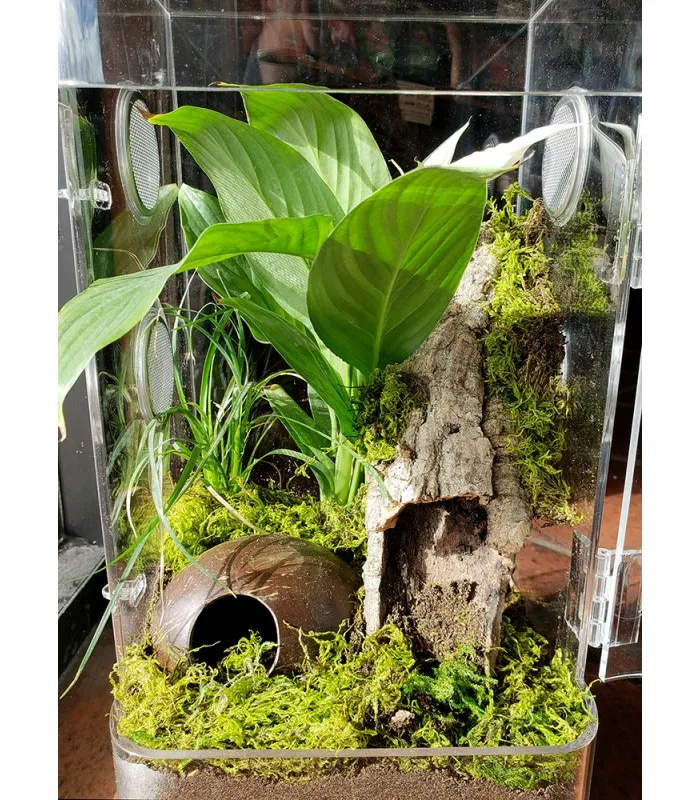What Makes the Best Tarantula Enclosure?
Choosing the right enclosure is paramount to ensuring your tarantula’s health, happiness, and longevity. A well-chosen enclosure provides a safe, secure, and stimulating environment that mimics the tarantula’s natural habitat. Several factors contribute to an ideal tarantula enclosure, including size, ventilation, substrate, temperature and humidity control, and appropriate decor. Understanding these elements is crucial for any tarantula keeper, whether a seasoned enthusiast or a first-time owner. The best enclosure is not just a container; it’s a carefully designed living space that caters to the specific needs of your pet spider, promoting its well-being and allowing you to enjoy observing its fascinating behaviors. The goal is to create a thriving environment where your tarantula can thrive, providing you with years of enjoyment watching your spider grow and flourish.
Size Matters Choosing the Right Enclosure
One of the most critical aspects of selecting a tarantula enclosure is size. The enclosure should be large enough to allow the tarantula to move freely, hunt, and exhibit natural behaviors, but not so large that it feels overwhelmed or stressed. A general guideline is to provide an enclosure that is roughly three times the tarantula’s leg span in length and width. Height is also important, especially for arboreal species, as they need vertical space for climbing and web-making. Overly large enclosures can make it difficult for juveniles to find food and water, while too-small enclosures can restrict movement and lead to stress. The right size promotes healthy growth and provides a comfortable and enriching habitat for your tarantula. Proper sizing also helps in maintaining the correct temperature and humidity levels, making the overall care of your pet much easier.
Consider the Tarantula Species
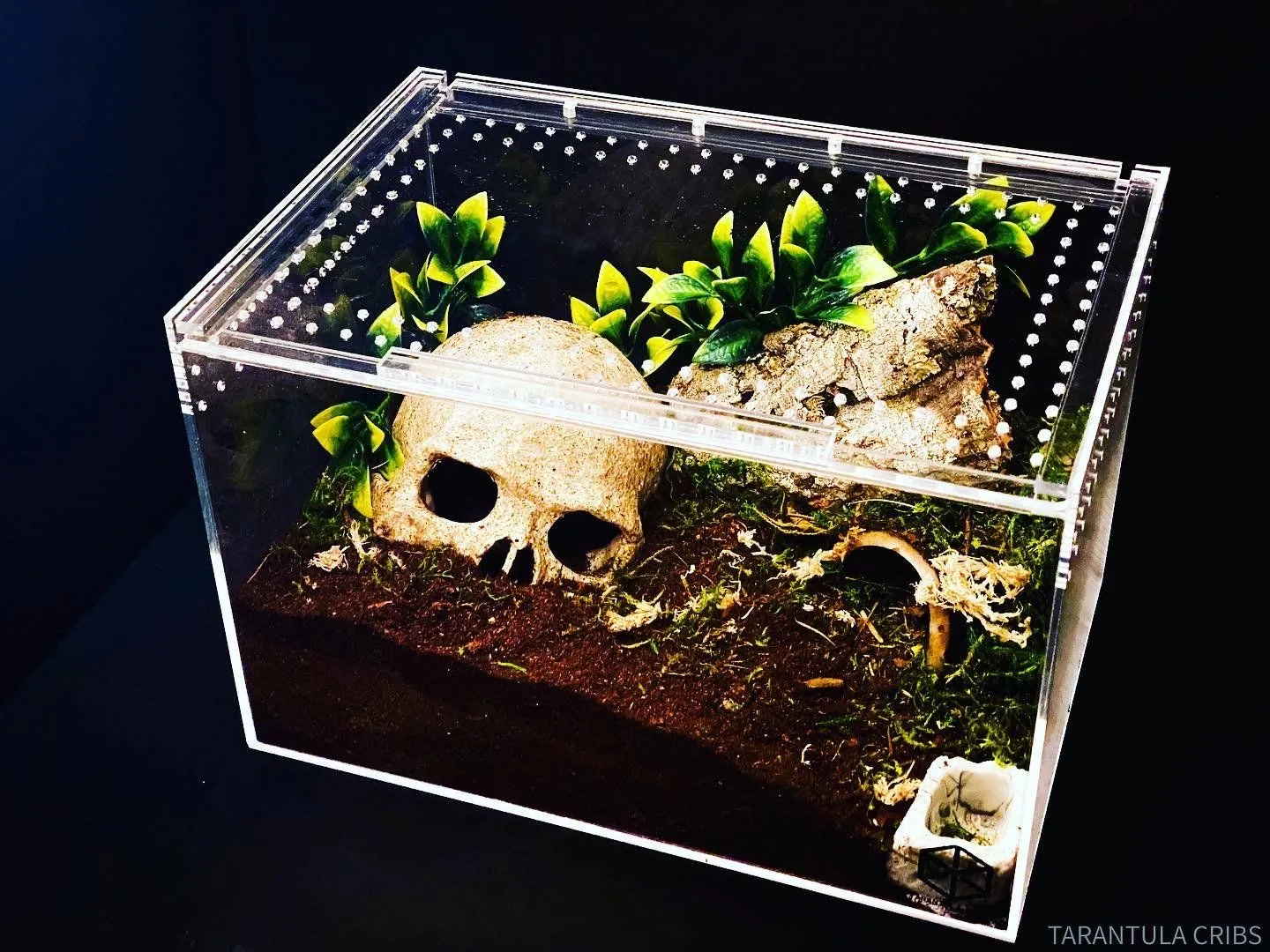
Different tarantula species have varying needs and preferences. Researching the specific requirements of your tarantula species is essential when selecting an enclosure. Terrestrial, arboreal, and burrowing tarantulas have distinct habitat needs, influencing the enclosure’s design and setup. Understanding these differences allows you to create an environment that best suits your tarantula’s natural behaviors, thus optimizing its living conditions and promoting its welfare. Some species thrive in humid environments, while others prefer drier conditions. Some are active and require more space for exploration, while others are more sedentary. Knowing these nuances is key to providing an ideal habitat.
Terrestrial Tarantulas
Terrestrial tarantulas, which live on the ground, require more floor space than height. Their enclosures should be wider and longer than they are tall, allowing ample room for walking and foraging. The substrate should be deep enough for burrowing if the species is inclined to do so. Examples include the Chilean Rose Hair Tarantula and the Mexican Red Knee Tarantula. These spiders generally prefer a ground-level habitat with plenty of hiding places and a comfortable substrate to burrow into. A spacious terrestrial enclosure promotes their natural behaviors, allowing them to feel secure and facilitating healthy molting and growth. Therefore, the enclosure’s dimensions and the substrate depth play key roles in the overall well-being of terrestrial tarantulas.
Arboreal Tarantulas
Arboreal tarantulas, which live in trees, require a tall enclosure with more vertical space for climbing and web-making. The enclosure should be taller than it is wide. Provide branches, cork bark, or other climbing materials to facilitate their arboreal lifestyle. Examples include the Greenbottle Blue Tarantula and the Pinktoe Tarantula. These spiders need a habitat that allows them to climb, perch, and build webs. The height of the enclosure is crucial because arboreal tarantulas spend most of their time above ground. This vertical design helps create a natural environment and supports the spider’s arboreal behaviors, promoting its health and well-being. Proper ventilation is especially important in arboreal enclosures, as it helps to prevent mold and maintain the correct humidity levels.
Burrowing Tarantulas

Burrowing tarantulas require a deep substrate to create their burrows. The enclosure should have a greater depth, at least equal to the tarantula’s leg span, to allow for tunneling. Provide a mix of substrate materials to aid in burrow construction. Examples include the Oklahoma Brown Tarantula and various species of Psalmopoeus. The key is deep substrate to allow for secure burrows. These spiders spend most of their time underground, so a proper burrowing environment is essential for their well-being. A deep substrate provides the necessary support for their tunnels and burrows and helps regulate humidity, temperature, and overall security. The right depth ensures they can create their safe havens, vital for their comfort and health.
Essential Features for Tarantula Enclosures
Several key features contribute to a healthy and enriching tarantula enclosure. These include adequate ventilation, appropriate substrate, and the ability to control temperature and humidity. These elements work together to create a balanced and comfortable environment. The right enclosure also offers aesthetic appeal while ensuring the tarantula’s safety and comfort. Considering these features helps you create an enclosure that supports your tarantula’s overall health and well-being, and it allows you to create a captivating and functional habitat.
Ventilation is Key
Proper ventilation is essential for maintaining air quality and preventing the buildup of mold and bacteria in the enclosure. Adequate airflow helps regulate humidity and reduces the risk of respiratory issues. Ventilation can be achieved through strategically placed vents in the top and sides of the enclosure. Ensure the vents are small enough to prevent the tarantula from escaping but large enough to allow for sufficient airflow. The design should allow for a constant exchange of air, preventing stagnant conditions. Good ventilation is vital for the spider’s health, contributing to a cleaner, healthier environment where your tarantula can thrive.
Substrate Selection
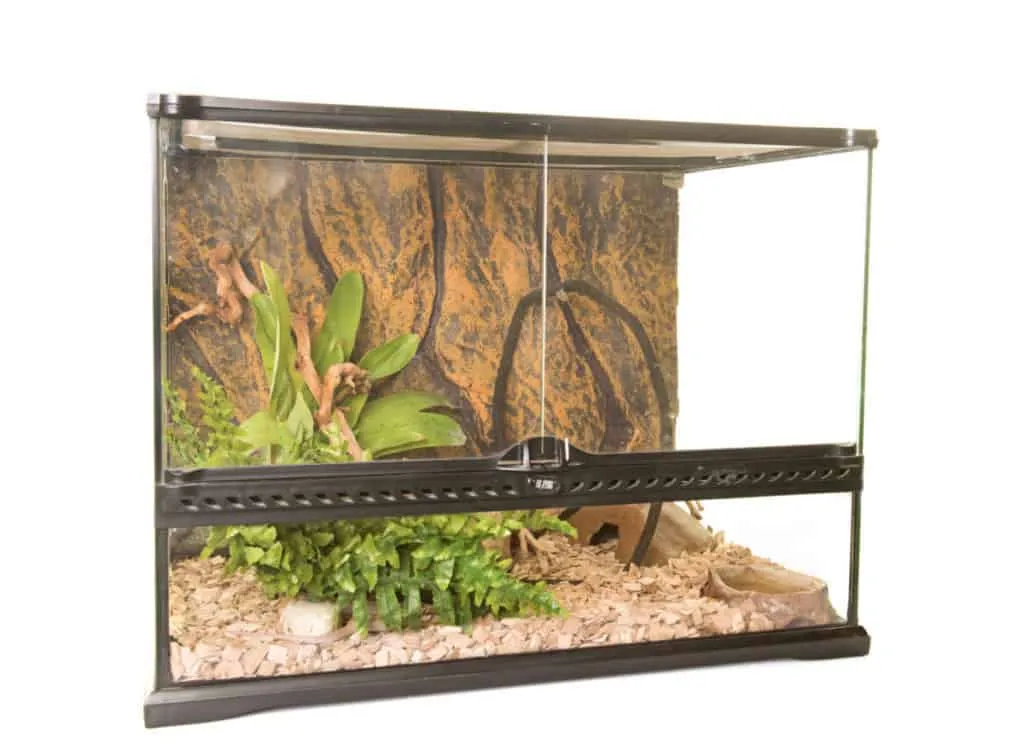
The substrate is the bedding material that lines the bottom of the enclosure and serves multiple purposes. It provides a surface for the tarantula to walk on, allows for burrowing (if applicable), helps maintain humidity, and offers a degree of security. Suitable substrates include coco fiber, peat moss, vermiculite, and a mix of these materials. The choice of substrate depends on the species and its specific needs. For example, burrowing species require a substrate deep enough for them to create their tunnels. The substrate should also be changed regularly to maintain hygiene and prevent the buildup of waste products. The proper selection of substrate is vital, as it supports the spider’s natural behaviors and overall well-being. Keep in mind, that the substrate should be kept slightly moist for most species.
Temperature and Humidity Control
Maintaining the correct temperature and humidity levels is vital for your tarantula’s health. Most tarantulas thrive in temperatures between 75°F and 85°F (24°C and 29°C). Use a thermometer to monitor the temperature inside the enclosure. Humidity levels vary depending on the species, with some requiring higher humidity than others. Use a hygrometer to measure humidity and adjust the environment accordingly. You can increase humidity by misting the enclosure with water or providing a water dish. Good temperature and humidity controls are critical for the spider’s metabolism, molting, and overall comfort. The right conditions mimic their natural environment and ensure that your tarantula lives a long and healthy life.
Decorating Your Tarantula’s Habitat
Decorating the enclosure with appropriate elements enhances the tarantula’s habitat and provides enrichment. Include items like cork bark, branches, artificial plants, and hiding places to simulate the tarantula’s natural environment and provide opportunities for exploration and security. Decorations also offer visual interest and can contribute to the overall aesthetic appeal of the enclosure. The decor is a key element in creating a suitable and stimulating habitat, promoting the spider’s well-being. However, decorations should be non-toxic and safe for your tarantula. They should not have sharp edges or be prone to trapping the spider. Careful selection adds to your pet’s comfort and enjoyment.
Hiding Places and Enrichment
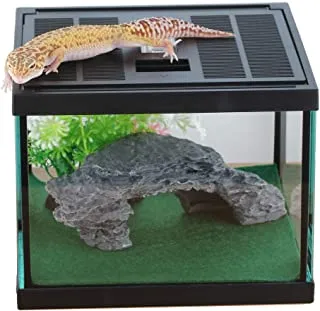
Tarantulas are naturally secretive creatures and benefit from having hiding places in their enclosure. These can be provided by using cork bark, hollow logs, or commercially available hides. Hiding places offer a sense of security and reduce stress, especially during molting. Enrichment items, such as branches or artificial plants, can also be added to stimulate the tarantula and encourage natural behaviors like climbing or web-building. Providing a varied and stimulating environment is important for your pet’s mental and physical well-being, helping them lead a more active and fulfilling life. The right elements help to replicate their natural surroundings and encourage the spider to express its natural behaviors.
Water Sources
Providing a clean water source is essential for your tarantula’s hydration. A shallow water dish is the most common method, ensuring the water is easily accessible and poses minimal risk of drowning. The dish should be sized appropriately to the tarantula and placed securely to prevent spills. Regularly check and refill the water dish to maintain a fresh and clean water supply. This is vital for your tarantula’s health, as dehydration can lead to serious health problems. Ensure the water source is regularly cleaned to prevent bacterial growth, keeping the water fresh and safe. The water dish should be easily accessible to the tarantula, especially during molting and periods of high activity.
Safety and Accessibility
Prioritize safety and accessibility when designing and setting up the enclosure. The enclosure should have a secure lid to prevent escape. Ensure all materials used are non-toxic and safe for the tarantula. Consider how easy it is to access the enclosure for feeding, watering, and cleaning. An enclosure that is easy to manage is more likely to be well-maintained, ensuring your tarantula’s comfort and well-being. It should also be designed to minimize the risk of injury. Proper setup and design promote your safety and the safety of your pet. Carefully assess the materials used, ensuring the safety and practicality of the environment.
Best Materials for Tarantula Enclosures
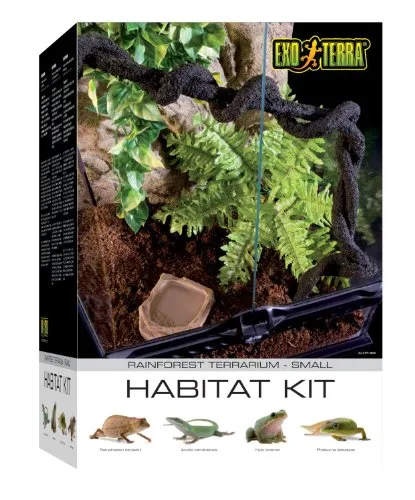
The choice of material for the enclosure significantly impacts the overall quality and suitability of the habitat. The primary materials used for tarantula enclosures are glass, acrylic, and mesh, each with its own advantages and disadvantages. The selection of material should be based on its safety, durability, ease of maintenance, and suitability for the tarantula’s needs. Understanding the properties of each material helps you choose an enclosure that best supports the health and well-being of your pet. The right choice will enhance the beauty and functionality of the habitat, allowing you to enjoy your tarantula and provide it with a safe and thriving home.
Glass Enclosures
Glass enclosures are a popular choice due to their transparency, allowing for excellent viewing of the tarantula. Glass is durable, easy to clean, and resistant to scratches. However, glass enclosures can be heavy and may not provide sufficient ventilation unless specifically designed with vents. Glass also retains heat, which can be a benefit, but it can also make it difficult to maintain a consistent temperature. Always ensure proper ventilation. These enclosures offer a clear view, adding to the enjoyment of observing your pet. Make sure that the enclosure has adequate ventilation for airflow and the spider’s comfort and well-being. Carefully assess the specific needs of the spider species.
Acrylic Enclosures
Acrylic enclosures are lightweight, more impact-resistant than glass, and provide excellent clarity. They also offer better insulation than glass, helping to maintain temperature. Acrylic enclosures can be more expensive. They can also scratch easily, requiring careful handling and cleaning. Acrylic is a versatile material that allows for various designs and customizations, offering options such as integrated ventilation systems. Consider your tarantula’s requirements and your budget when deciding between acrylic and other materials. These enclosures’ clarity allows for optimum viewing of your pet and its habitat.
Mesh Enclosures
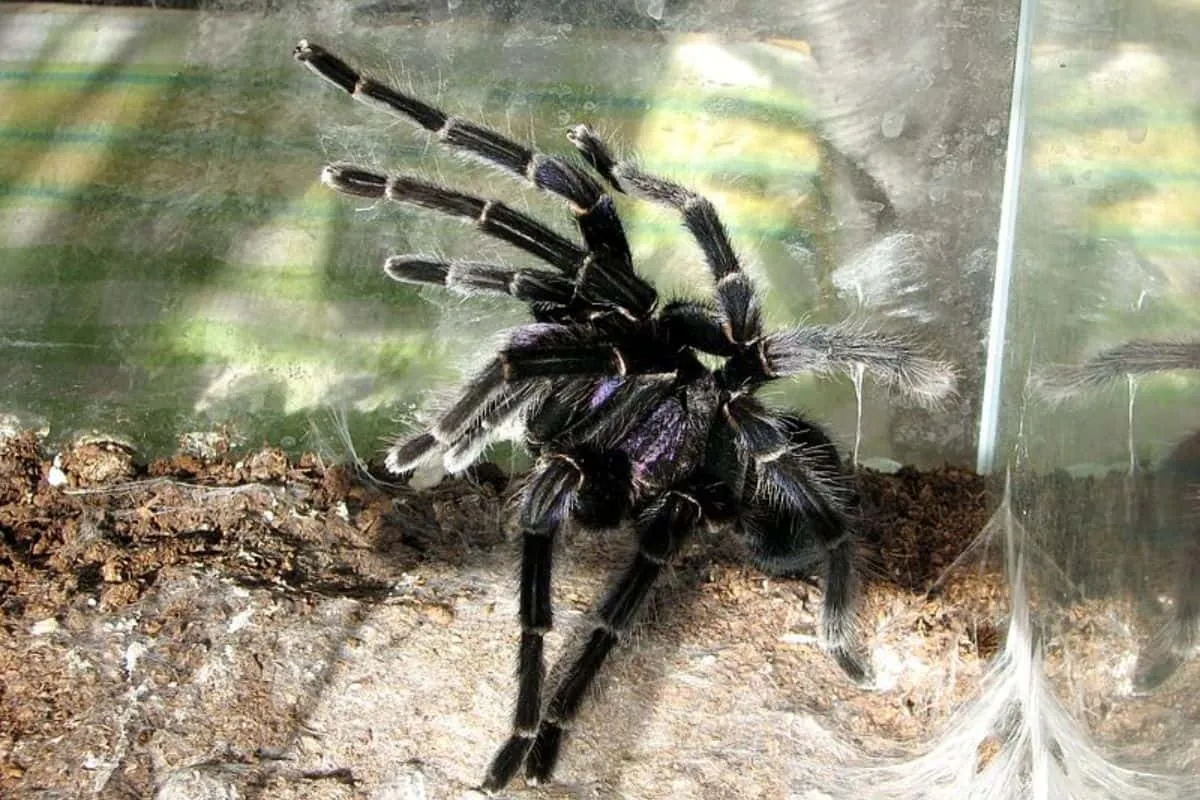
Mesh enclosures provide excellent ventilation, making them suitable for species that require high airflow. They are generally lightweight and can be more affordable than glass or acrylic. However, mesh enclosures may not retain humidity well, and smaller mesh sizes are required to prevent escape. They can also be difficult to clean and offer less clear visibility than other materials. Ensure the mesh is made of a non-toxic material and that the openings are small enough to prevent escape. Consider the needs of the specific tarantula species. Mesh enclosures are great for arid environments; however, they might not be suitable for all tarantulas.
Maintaining and Cleaning Your Enclosure
Regular maintenance and cleaning are essential for keeping your tarantula’s enclosure a healthy and comfortable environment. A consistent cleaning schedule and proper substrate replacement are crucial to preventing the buildup of waste products, mold, and bacteria. Regular monitoring and adjustments to temperature and humidity levels are also vital to ensuring the tarantula’s well-being. Routine maintenance helps prevent illness and keeps the enclosure fresh and enjoyable. This will promote your spider’s long-term health and happiness. The right maintenance schedule is fundamental for your pet’s welfare.
Regular Cleaning Schedule
Establish a regular cleaning schedule to maintain the cleanliness of the enclosure. Spot-clean the enclosure weekly, removing any uneaten food, fecal matter, and old molts. A full enclosure cleaning should be performed every few months, depending on the species and substrate used. During a full cleaning, remove the tarantula (safely), remove and replace the substrate, and thoroughly clean the enclosure with a reptile-safe disinfectant. Always rinse thoroughly and allow the enclosure to dry completely before returning the tarantula. Regular cleaning ensures that the environment remains sanitary and free of harmful microorganisms. Proper cleaning prevents the buildup of waste and keeps your tarantula healthy.
Substrate Replacement

The substrate should be replaced regularly to maintain proper hygiene and prevent the buildup of waste and bacteria. The frequency of substrate replacement depends on the type of substrate and the tarantula species. Generally, substrate should be replaced every 3-6 months, or sooner if there is a foul odor or visible mold growth. When replacing the substrate, remove all old substrate and thoroughly clean the enclosure. Use fresh, clean substrate appropriate for the tarantula species. Regular substrate replacement is crucial for preventing illness and maintaining a healthy environment for your pet. The right cleaning approach ensures optimal well-being.
Monitoring and Adjustments
Regularly monitor the enclosure’s temperature, humidity, and overall condition. Use a thermometer and hygrometer to ensure that temperature and humidity levels are within the ideal range for your tarantula species. Adjust the environment as needed, by misting the enclosure, adding or removing a heat source, or increasing ventilation. Observe your tarantula’s behavior for any signs of stress or discomfort, such as loss of appetite, lethargy, or excessive hiding. Monitoring ensures you can proactively adjust the enclosure to meet the tarantula’s needs. Making timely adjustments and regular assessments contribute to a thriving, safe environment for your tarantula. The right monitoring approach is vital to the health of your pet.
Conclusion Choosing the Perfect Enclosure
Choosing the best tarantula enclosure is a critical aspect of responsible pet ownership. By considering the species-specific needs, size requirements, essential features, and appropriate materials, you can create a thriving and enriching habitat for your tarantula. Remember to prioritize safety, ventilation, and the well-being of your pet. Regular maintenance and cleaning are essential for maintaining a healthy environment. By investing time and effort into selecting and maintaining the right enclosure, you can ensure that your tarantula lives a long, happy, and healthy life. Your dedication to creating the best possible environment for your pet will bring years of enjoyment. The right enclosure offers a safe and fascinating view into the world of tarantulas.
